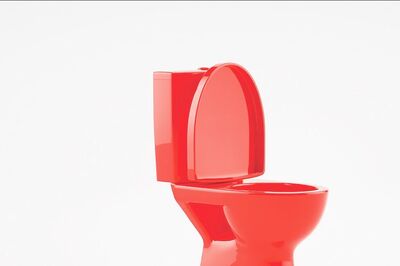
views
A proposal for the purchase of 126 MMRCA (Medium Multi Role Combat Aircraft) was first mooted by the IAF to the Vajpayee-led NDA government in 2000. On acceptance, the initial RFI (Request for Information) was issued in 2001.
Meanwhile, the Congress-led UPA government came into power in 2004 and the Defence Acquisition Council (DAC) headed by the then Defence Minister AK Antony gave clearance for the purchase of 126 MMRCA, post which the RFP (Request for Proposal) was issued in June 2007. The RFP was earlier planned to be issued in December 2005, but the timeline was delayed as a new Defence Procurement Procedure (DPP) was put in place in 2005 and there was a need to fine-tune the offset policy under DPC 2005. The concept of total life cycle costs had been introduced for the first time in Indian defence procurements and was reportedly a major source of the delay.
Six companies shortlisted during the RFI process were issued the RFP for the procurement of 126 MMRCA of which 18 aircraft were to procured in “fly away condition” and the balance 108 were to be built by Hindustan Aeronautical Limited (HAL) under transfer of technology (TOT). These were Dassault Aviation (France) for Rafale, Eurofighter Typhoon (multinational), RAC-MiG (Russia) for the MiG 35 Fulcrum, SAAB International (Sweden) for JAS39 Gripen, Boeing (USA) for F/A-18E/F Super Hornet and Lockheed Martin (USA) for the F-16 IN Super Viper.
Technical evaluations of the six aircraft were thereafter undertaken by the IAF, followed by field trials in August 2009. By early 2010, the evaluation of all the aircraft had been completed and in April the six firms were requested to forward their updated bids. By April 2011, two bids had been shortlisted for the purchase of MMRCA—Dassault Aviation for its Rafale and Eurofighter for its Typhoon. The final bids made by both were opened on 4 November 2011 and on 31 January and Dassault Rafale was selected for exclusive negotiations.
Looked at holistically, this was a well-considered choice as the IAF already had 49 operational Mirage 2000 jets manufactured by Dassault Aviation as well as 92 operational Jaguar jets produced by HAL in technical collaboration with the same company. The defence minister confirmed that Dassault Aviation would supply 18 Rafale MMRCA in fly-away condition and that the remaining 108 fighters would be manufactured by HAL under TOT and that the contract would be signed after March 2012.
Meanwhile, in February 2012, Dassault Aviation signed a Memorandum of Understanding (MoU) with Reliance Group to form a joint venture to explore joint opportunities in the defence sector and cooperation in the execution of the MMRCA (Rafale) deal. As stated by Eric Trappier, CEO of Dassault, in an interview to the Economic Times, Dassault Aviation was keen to partner Reliance and not HAL, as both were family enterprises and could work together.
However, as the RFP had pre-specified that HAL would be the lead integrator, Dassault agreed to work with HAL. It, however, stated it would help Reliance to create a Rs 1,500 crore factory in Bengaluru to produce wings for the Rafale jets to be made in India by HAL.
All that remained to be done now was to sign the deal, but it fell through on extraneous grounds, 28 months after the announcement of Dassault Rafale being finalised. When the deal was put up to the Defence Minister for his seal of approval, he reportedly approved the deal but with a caveat that Dassault Aviation must take responsibility for the 108 Rafale MMRCA HAL was to produce. This obviously was not acceptable to Dassault Aviation, as they could not take responsibility for the professionalism and expertise of another organisation. They also had reservations about the ability of HAL to accommodate the complex manufacturing and technology transfers of the aircraft.
There were other issues too. While Dassault had provisioned for 30 million man-hours for production of the 108 Rafale jets in India, HAL's estimate was 2.7 times higher, escalating costs manifold. Why Antony reportedly made an observation on file that was designed to kill the deal remains a mystery. But the nation's defence capability stood compromised to that extent.
In 2014, the BJP-led NDA government was voted to power and Narendra Modi was sworn in as prime Minister. The IAF was still woefully short of fighter aircraft to fulfil its operational commitment and Modi was apprised of the same.
Getting back to the original deal was not possible and a fresh deal would have come with all the attendant delays associated with the bidding process. There was an issue of operational urgency and Modi, during his visit to France, announced on April 10, 2015, that India would buy 36 Rafale jets in a fly-away condition from Dassault Aviation, through a government to government (G to G) agreement.
Being a ‘G to G’ deal obviated all issues of impropriety which had characterised many earlier defence deals. Within a year, on September 23, 2016, the deal for 36 Rafale jets was signed between the two governments for a sum of €7.87 billion (Rs 59,000 crore approximately).
A comparison between the aborted deal of the UPA and the one executed by the NDA is odious as the former was not inked, and hence we do not know what price had been negotiated for the 126 Rafale MMRCA. The MoD had given an indication that the final value of the MMRCA deal would be in the range of Rs 791-987 crore per jet. However, this excluded about 50 to 60 unpriced items which were listed as miscellaneous in the winning bid by Dassault.
Dassault’s bid only included the price of the initial 18 aircraft, licensing fees and the supply of parts required to assemble the remaining 108 in India. It excluded weapons, maintenance and the costs that HAL would incur for local assembly. The cost of Rs 1600 crore for a ready to fight aircraft, which includes the full complement of modern armaments, guidance systems and specific to India only add-ons was thus a good deal to clinch, both in terms of cost and operational needs. It was also a bold decision taken by the Prime Minister in the national interest as against the sloth and lethargy that existed earlier on a matter as vital as national defence.
It reflects poorly on the Indian political system that a needless controversy was created over the 2016 Rafale deal by the opposition as an election plank prior to the 2019 general elections, but the electorate rejected the charges of impropriety and voted the BJP back to power with a thumping majority. In any case, there is little scope for impropriety in ‘G to G’ deals. Also, allegations that the Reliance Group was favoured by the government in giving offset contracts found little traction as the DPP clearly states that choice of offset partners was the prerogative of the manufacturer and not the government. In any case, it was under the Congress-led government that Dassault Aviation signed an MoU with Reliance Group in 2012.
As the first five Rafale fighter jets landed in India today, the nation finally has one of the latest and most potent fighter jets in its armoury. This will greatly enhance the capability of the IAF, especially when all 36 jets are delivered.
(The author is a retired Major General of the Indian Army and is currently Director of the India Foundation. Views are personal.)




















Comments
0 comment